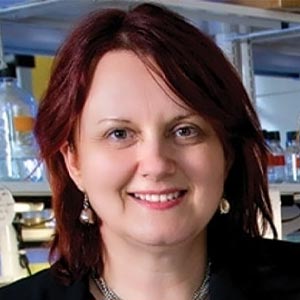The vast and the curious
/prod01/twu-cdn-pxl/media/images/biology/cloning.jpg)
TWU molecular biology class unlocks DNA secrets

Oct. 25, 2022 – DENTON – There is a dimension unknown to all but an uncommon few. It is vast, yet fits within the nucleus of a single cell and challenges the human mind's concept of the finite. It is found in every living creature on Earth and within its matrix is the blueprint of each organism, but until very recently it existed beyond human comprehension. It is the world of the infinitesimal.
It is also the classroom of Texas Woman's University biology professor Catalina Pislariu, PhD.
And it's a little hard to wrap your mind around.
"It's so abstract," Pislariu said. "When I started studying this in school 22 years ago (when she began pursuing her PhD) I was at the level of many of my students who can't wrap their heads around this. How do you do this?"
Pislariu, professor Nathaniel Mills, PhD, and teaching assistant Hala Samara teach courses in molecular biology, a branch of science that studies DNA and includes cloning. Pislariu, however, chafes at that limitation.
"It's not just cloning, it’s molecular techniques, methods and instrumentation," she said.
And it's one of the most hands-on graduate-level course TWU offers.
"This is the type of class you cannot teach online," Pislariu said. "It's meant for incoming graduate students to become familiar with molecular techniques so they can use them in their own research."
Molecular biology, a phrase that didn't exist until 1945, is the study of how molecules interact with one another in living organisms to perform the functions of life, and is applicable across a swath of scientific fields.
"In our class, we had cancer biologists, neuroscientists, protein degradation people," said student Miles Gladen. "We're all bringing our research into the classroom."
But something surprising happened in the 2021-22 class. The students didn't just learn how to make discoveries later in their careers. They actually made discoveries of several unique DNA sequences which were published in the gene sequence database of the National Center for Biotechnology Information at the National Library of Medicine.
"At the beginning, I didn't know the students would get such high-quality data that would be publishable," Pislariu said. "They do every little piece of work that a seasoned scientist would do in their research. It's a wonderful experience. They went from a gene identity to moving that gene into a plasmid, sequencing it, finding out the sequence, and finding out the encoded protein’s localization in a semester's work."
And the National Center for Biotechnology verified the discoveries as new and correct.
"They were thrilled," Pislariu said of her students. "The excitement that this brings when you have a project that has a purpose, starting with an initial question and finish with an end product that gives you a scientific answer, that makes them feel really excited."
For the vast majority of the population, molecular biology is utterly alien. Most of us are ignorant of its concepts and language. For example, consider the title of one of the four published submissions:
"Medicago truncatula f. tricycla nodule-specific PLAT/LH2 domain protein (NPD2) mRNA, complete cds"
Or the title of one of the course research methods from TWU catalog:
"Plasmids as Vectors for Recombinant DNA"
And if that's incomprehensible, try to wrap your head around the physical nature of DNA.
The invisible world of microbes and cells is measured in micrometers. A microbe, like a bacterium, can be between one and 10 micrometers. An animal cell is 10 micrometers. For comparison, a meter (slightly longer than one yard) is one million micrometers.
But many of us at some point in school looked through a microscope to see microbes and cells. DNA, however, is in a sub-invisible world pierced with an electron microscope. In fact, it was only 10 years ago that the DNA double helix was first photographed in blurry, indistinct images.
/prod01/twu-cdn-pxl/media/images/biology/cloning-dna.jpg)
Media Contact
David Pyke
Digital Content Manager
940-898-3668
dpyke@twu.edu
Page last updated 10:06 AM, October 25, 2022